Matador Network's Blog, page 690
March 9, 2021
Northwest Indiana is the Midwest beach destination that locals keep secret
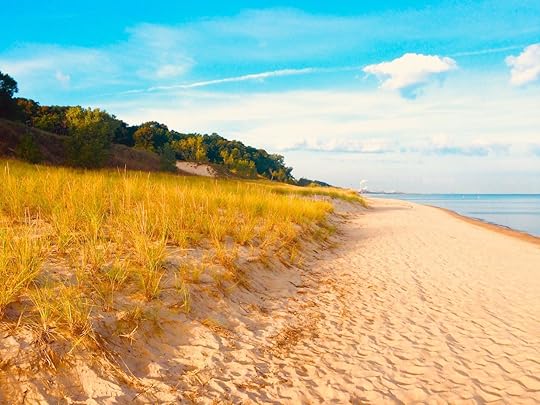
Indiana and maritime culture aren’t terms that usually appear in the same sentence. But for those in the know, it’s a word combination that makes sense. After all, the southernmost shores of Lake Michigan ring northwest Indiana and there wouldn’t be a national park and dozens of beaches here, nor a collection of oft-photographed, historic lighthouses, if the area weren’t as lovely as it is fun to explore.
Michigan City is the area’s cultural hub, Indiana Dunes National Park its playground, and South Bend its urban center. All are cool spots for families to get away in the Midwest, with the bonus of being accessible by train from Chicago (and far more affordable than heading to an ocean coast). If a beach vacation close to the heartland is in order, the Hoosier State is calling.
Getting to and moving around the region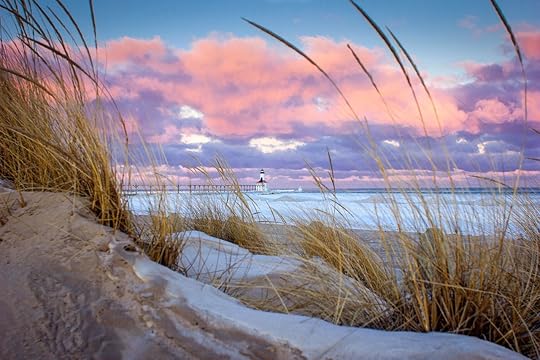
Photo: Jaclyn Novak/Shutterstock
The beaches of Indiana are an easy drive from Chicago or South Bend, with the national park an hour away from either city. If you plan to fly in, the airports in these two cities are the best options. From either city, you can hop on Interstate 90 and drive, but for a more relaxing family vacation, the scenic South Shore Line train connects Chicago’s Millennium Station to South Bend International Airport, linking Michigan City and Indiana Dunes National Park en route.
Riding from Chicago to South Bend takes about 3.5 hours, with trains departing throughout the day. Most allow you to bring bicycles (look for the bicycle icon next to the specific pickup time you hope to catch), and fares cost up to $14.25 per person depending on how far you travel. Visit between Memorial and Labor days for the best weather, though the views out across Lake Michigan are striking year-round.
Visit the cultural hub of maritime Indiana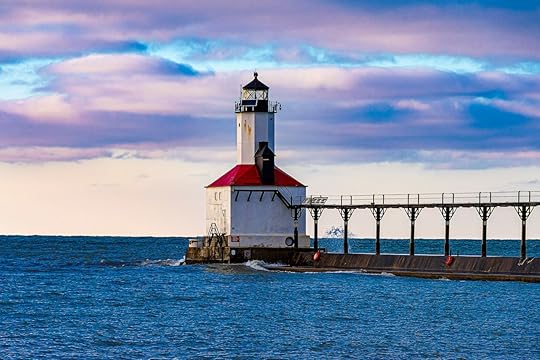
Photo: Nejdet Duzen/Shutterstock
Michigan City, just south of the Michigan border and north of Indiana Dunes National Park, is Indiana’s unofficial nautical headquarters. The culture in this town of just over 30,000 revolves around the water. There are two lighthouses: the historical Old Michigan City Light, erected in 1858 and in use until 1940, and the still-operating main lighthouse, built in 1904 and Indiana’s only operating lighthouse. You can see and photograph both within a walk of each other, and the operating lighthouse, the Michigan City East Pierhead Lighthouse, is a historical designation located just offshore and viewable from Washington Park and Beach. The elevated “catwalk” from shore to the lighthouse is not open.
Plan to spend a couple of hours at Washington Beach. This is easily the most underrated beach in the Great Lakes, home to two miles of sand on which to lounge and take in the summer sun, a kids’ water park, and the Washington Park Zoo. The zoo started as a sanctuary for rescued animals and continues to house many animals not typically seen in the Midwest, like grizzly bears, a Bengal tiger, and an African tortoise.
You can surf here when wind swells come in, most consistently in the fall through early spring. The beach is a quick bike ride or moderate walk from the heart of town and its many restaurants, including the Shoreline Brewery and Fiddlehead Restaurant, known for its burgers and lobster rolls. For fresh seafood, try Bartlett’s Fish Camp, the town’s only raw bar, on the edge of Lake Michigan Harbor. Just south is Central Ave. Beach, a quieter stretch of sand with calm waves and plenty of space to spread out and let the kids run around.
While in town, visit the Old Lighthouse Museum to learn about the area’s maritime history. Michigan City is also the best town in the region from which to set sail. Visitors can head out on a 90-minute cruise with Harbor Country Adventures ($30), where you’ll set sail on the Emitta II and learn about the fishing culture and the history of coastal life in the region from one of the ship’s two decks or its bar-side lounge. If you live in northern Indiana or southern Michigan or plan to be in the area a while, you could sign up for a sailing course with South Shore Sailing School, which meets weekly for four weeks to cover the basics of sailing.
The Bridge Inn, with nightly rates starting at just over $100, offers the vibe of a coastal beach hotel with the hospitality of the Midwest — right down to the Pulled Porkie sandwich at the on-site Bridges restaurant. Other boutique options include the Duneland Beach Inn at Farina’s Supper Club, ideal if you’re traveling with a romantic partner and seeking a good date night that doesn’t require a drive back to the hotel afterward.
Train station: Michigan City 11th St. Station
Explore the beaches of Indiana Dunes National and State Parks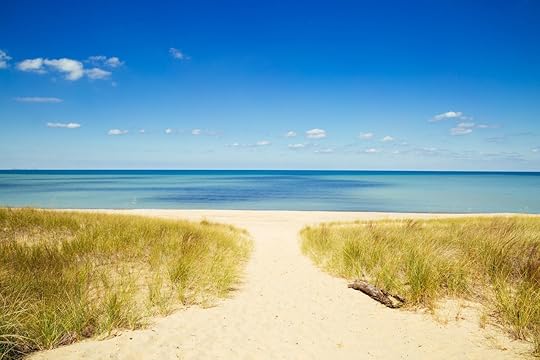
Photo: Emily Tolan/Shutterstock
The land of the “singing sand” was the United States’ newest national park until West Virginia’s New River Gorge earned the status earlier this year. The “singing” part refers to the whistling of the dunes as the Midwest wind passes through them, creating a sort of all-natural, local soundtrack. Another unique feature of this park is that, as a result of those same winds, it’s constantly changing. The dunes dancing to their own tune as they slowly shift and reconvene. Even the tallest dune, Mount Baldy, is climbable when winds permit, but you can get out on the West Beach Trail System on most days.
Beaches inside the park include West Beach and Dunbar Beach, the former attracting hikers and recreators while the latter is the spot to throw a towel and relax. Catch the sunset here as it sets over the water, reflecting oranges and yellows off the rounded rocks near shore. Also on site are Porter Beach and Kemil Beach, another good spot for hikers as it serves as the trailhead for the park’s Dune Ridge Trail. A wooded path leads out to Central Beach.
Outside the national park, the adjacent Indiana Dunes State Park offers an additional three miles of calm beach sands popular with local families looking to avoid the recently increasing crowds at the national park.
If you want to overnight here, both the national and state parks offer maintained campgrounds, though be sure to book in advance, as the campgrounds tend to fill up during the summer months. Hotels from many chains are available in Portage, just outside the national park, as is Riley’s Railhouse, a long-running bed and breakfast in Chesterfield that plays on the theme of America’s railroads, appropriate if traveling on the South Shore Line.
Train Station: Dune Park Station
Start or finish your trip in South Bend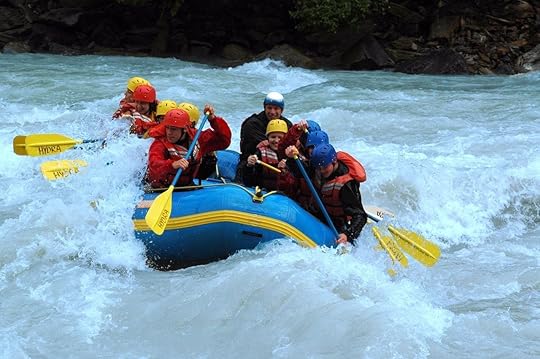
Photo: Visit Indiana/Facebook
South Bend is among the most classic university towns in the US, home to Notre Dame University and St. Mary’s College, along with campuses of Indiana State University and the University of Indiana. But it’s also a good place to start or cap a beach trip to Indiana because of one of the most unique on-water activities in the Midwest: the South Bend East Race.
On the St. Joseph River in downtown South Bend, the East Race is a collection of artificial whitewater rapids that creates waves up to six feet tall, where you can kayak or raft; rental equipment is available. The most unique option might just be kayak-surfing the waves by maintaining a ride on a wave for as long as possible, much like a surfer in the ocean. Even if you don’t participate yourself, hanging on the shoreline and watching others attempt it is entertaining, as both impressive rides and total wipeouts frequently occur. If traveling by train, Uber and Lyft operate in the city and can take you from the airport station to the East Race put-in.
Train Station: South Bend Airport 
The post Northwest Indiana is the Midwest beach destination that locals keep secret appeared first on Matador Network.

A bright meteor streaked across the Vermont sky, shaking buildings in its path

The people of Vermont got quite a scare on Sunday night, as a meteor traveling 42,000 miles per hour was spotted streaking across the sky in the northern part of the state.
It was seen traveling northwest across 33 miles, from Mount Mansfield State Forest to Beach Hill in Orleans County south of Newport, CNN reported. About 100 people witnessed the celestial phenomenon and even felt and heard it as it shook buildings on Earth and produced a sound.
“As the object (which was likely a fragment of an asteroid) penetrated deeper into the atmosphere, pressure built up on its front while a partial vacuum formed behind it. About 30 miles up, the pressure difference between front and back exceeded its structural strength. The space rock fragmented violently, producing a pressure wave that rattled buildings and generated the sound heard by those near the trajectory. Such a pressure wave can also couple into the ground, causing minor “tremors” that can be picked up by seismic instruments in the area,” NASA Meteor Watch explained on Facebook.
The fireball was captured by a camera at the Burlington International Airport. You can see the meteor streaking across the sky in the upper left.
Based on the infrasound measurements, the agency was able to determine that the meteor weighed about 10 pounds and had a diameter of six inches. 
The post A bright meteor streaked across the Vermont sky, shaking buildings in its path appeared first on Matador Network.

9 notable places to visit where women warriors are honored as monuments
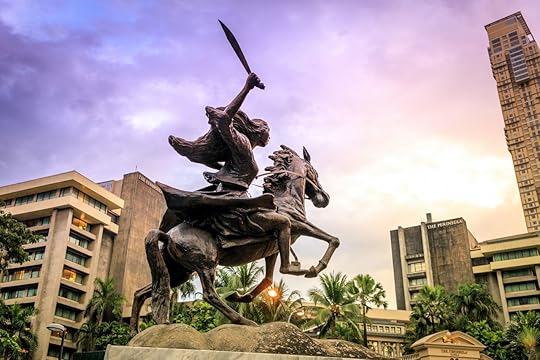
Across the globe, women are honored in the form of monuments for being warriors of political warfare. While many female figures have gone underrepresented throughout history for their fighting efforts, there are select cities and towns that notably celebrate women through museums, plazas, streets, currencies, and of course, statues. By including these significant places of interest in future travel plans, we are reminded that these historical leaders have not only physically struggled to earn their names in history books, but have also waged a war against gender inequality. From Oita in Japan to Ayutthaya in Thailand to Ho Chi Minh City here are nine notable cities and towns worth visiting where women warriors are dignified.
1. Anyang, China, honors Lady Fu Hao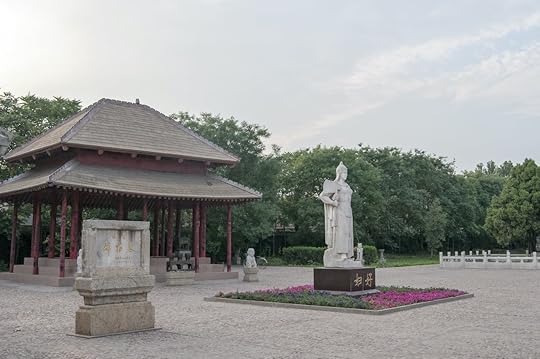
Photo: helloworld11/Shutterstock
Lady Fu Hao is remembered for being the first-ever female general of China who took charge of several military campaigns and commanded up to 13,000 men. Fu Hao’s tomb, which dates back to 1250 BCE, was recently discovered in Anyang around 1976. The city of Anyang is recognized as a UNESCO World Heritage site,a> for being the birthplace of ancient Chinese civilization and home to one of China’s major archaeological finds: the Yin Xu ruins. Lu Hao’s tomb is closed in the Yin Xu site and is considered the most intact and well-preserved relic of the Shang Dynasty.
After the tomb’s discovery, a replica stone statue of Fu Hao decked out in military armor was constructed to adorn the crypt’s entrance. The mausoleum now exhibits over 2,000 ancient artifacts, from bronze figurines to weaponry. A burial of this caliber was not customary for women in ancient China, making it easier for archaeologists to confirm the remains are that of Lady Fu Hao’s.
2. Oita, Japan, honors Myōrin (Yoshioka Myorinni)
Photo: Ben Petcharapiracht/Shutterstock
Myōrin served as a militant for the Otomo Clan during the 16th century and made her claim to fame in Oita City by steadily rejecting multiple attacks and protecting Tsurusaki Castle against the Shimazu army.
Although Myōrin was not the first female samurai to defend Japan, she continues to influence protagonists in video games and books. In her honor, a small, white, yet bold statue can be visited while touring the Tsurusaki neighborhood of Oita City. Myōrin’s efforts with the Otomo Clan left behind a plethora of historical fortresses to explore, such as the ruins of Tsurusaki and Funai castles.
As one of the birthplaces of Japan’s brutal military history, it’s hard to believe that Oita City is now well-known as a wellness destination in the country. Many flock to the spa town for its famed onsens, and just north of the city is Beppu, one of Japan’s most popular hot spring resorts.
3. A Coruña, Spain, honors Maria Pita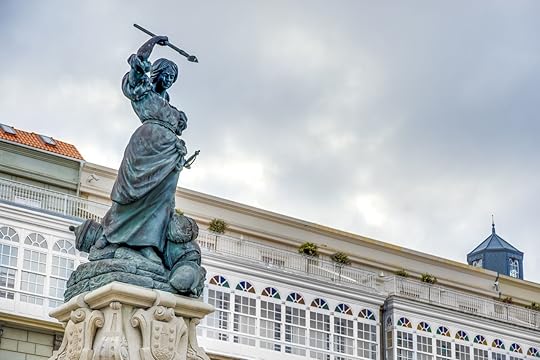
Photo: Anibal Trejo/Shutterstock
Maria Pita is famous for shouting “Whoever has honor, follow me!” after her husband was killed during the invasion of the English Armada on the port city of A Coruña in 1589. Pita’s bravery has been commemorated in a brass monument in Praza de Maria Pita, a square named in her honor.
The plaza is a great place for people watching and a good starting point for touring the old city. A short walk from the statue you will find Maria Pita’s original home, which is now a museum. Although the house is a modern recreation of what it once was, it has a nice arrangement of informative plaques and historical relics.
4. Ayutthaya, Thailand, honors Queen Suriyothai
Photo: Christian Mueller/Shutterstock
Ayutthaya City is located about an hour away from Bangkok. The ancient city is packed with Buddhist temples, monasteries, and ancient statues that makes for a great day trip from the capital city. At the center is Ayutthaya Historical Park, which is a UNESCO World Heritage site with multiple attractions that are walkable, easily accessible by bike, river-boat, and chartered-bus group tours. Although there is a lot to explore, one must-see monument is that of Queen Suriyothai. Her memory is commemorated in a life-size bronze statue in Memorial Park, which is a quick 15-minute drive from Ayutthaya’s city center.
Queen Suriyothai is celebrated for her efforts during the invasion of the Burmese in the 1500s. As the story goes, Suriyothai, who was afraid for her family’s safety, disguised herself as a male soldier and rode an elephant into the conflict. The queen sadly died but it’s believed that her bravery prolonged civilization in Ayutthaya before it eventually fell to the Burmese.
5. Stockholm, Sweden, honors Kristina Gyllenstierna
Photo: douglasmack/Shutterstock
Queen Kristina Gyllenstierna is remembered for governing the palace of Stockholm with six children under her care after the death of her husband. She is famed for defending Stockholm’s independence and leading the country’s resistance against Denmark. A grandiose, marble statue dedicated to her is located in Royal Palace‘s outer courtyard. This monument was the first official female statue to have ever been erected in Sweden.
The palace itself is a joy to visit and a superb introduction to Sweden’s Baroque history. With endless rooms to explore, multiple entrances, and three public museums, visitors learn about the lives of the monarchy since the 10th century. It is also the current residence to the king of Sweden, King Carl XVI Gustaf, and is one of the most impressive royal residences in Europe.
6. Ullal, India, honors Rani Abbakka Chowta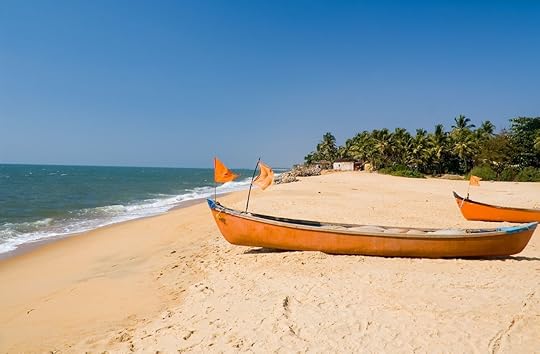
Photo: Mikhail Nekrasov/Shutterstock
Regarded as India’s first female freedom fighter, Rani Abbakka Chowta stood up to Portuguese colonization in her hometown of Ullal for four decades during the 16th century. To pay homage to her accomplishments, there are now multiple statues of the warrior donning lustrous Hindu garments and riding on a horse with a sword in hand throughout southern India. Her bronze statue in Ullal is cherished and although there are no dedicated museums to Abbakka Chowta, the seaside town is considered one of the oldest places of civilization in the country and is well worth a visit. Aside from the monument, there is an array of stunning temples, one of the highlights being Somanatheshwara Temple, which overlooks the Arabian Sea.
7. Luanda, Angola, honors Nzinga of Ndongo and Matamba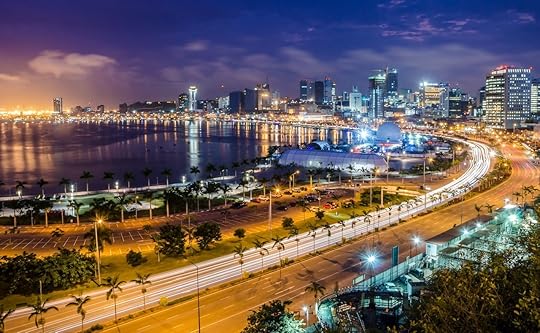
Photo: Fabian Plock/Shutterstock
During the 16th century, the Congo and southwest Africa were under grave threat from Portuguese slave traders who moved south to gain a stake in the slave trade market over England and France. One of the most aggressive opposers of this invasion was the female warrior, Nzinga of Ndongo and Matamba, an Angolan queen, who dedicated her life to defend her people from slave traders. The queen’s tactful, political strategies and attempts are memorialized today at Kinaxixi Square in Luanda, where an enormous statue pays tribute to her and where a major street was renamed in her honor.
Luanda is the world’s most populous Portuguese-speaking capital city and today you will find somewhat of a ritzy beach party scene along the city’s bay. But despite modern developments, Luanda’s sad, treacherous past is starting to be recognized. In 1997, the National Slavery Museum was founded and is one of the few museums dedicated to slavery on the entire continent.
8. Ho Chi Minh City, Vietnam, honors the Trưng sisters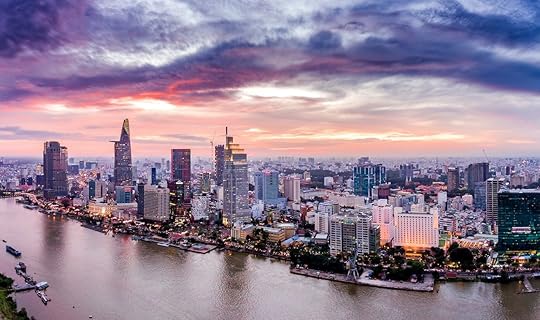
Photo: Nguyen Quang Ngoc Tonkin/Shutterstock
In 40 CE, after almost 250 years under Chinese control, the Trưng sisters led the first rebellion-heist in Ho Chi Minh City. Their efforts awarded them idol status in Vietnamese national history and stories of their heroism, specifically their strong matrilineal views of empowerment, have paved the way for many women in the country to obtain leadership roles. The Trưng sisters are memorialized in multiple statues in and around Ho Chi Minh City. Statues big and small are located throughout the city at shrines, in public parks, at the entrance to the city’s main emergency hospital, and at the Buddhist-themed amusement park Suoi Tien.
9. Makati, Philippines, honors Gabriela Silang
Photo: ARTYOORAN/Shutterstock
Gabriela Silang was a Filipina military leader known for her efforts in fighting for independence from Spain in the 18th century. After Silang’s husband was killed, she rose through the ranks and led rebel troops of several hundred men. Silang was captured and executed after four months, but her courageous leadership has become a symbol of the importance of women in Filipino society, as well as their struggle for liberation during colonization.
An immense monument of her riding a rearing horse stands in Makati, a city in the Manila region of the country. The organization Gabriela National Alliance of Women was created in Silang’s honor and is one of the largest international grassroots campaigns that supports women’s health and rights across many Southeast Asian countries. 
The post 9 notable places to visit where women warriors are honored as monuments appeared first on Matador Network.

March 8, 2021
Best sandwiches in New Jersey

In “Born and Raised,” a season four episode of Parks and Recreation, the show’s protagonist, Leslie Knope, reads a passage from her book. “Every town claims that its diner’s waffles are the best in the world, but somewhere, in some town, there really are the best waffles in the world,” she says. “Somewhere those waffles exist. Why can’t it be here?”
This sentiment perfectly encapsulates how I feel about sandwiches in New Jersey (and not just a particular town, but the whole state). I’d wager that nearly everybody in America, in every state, has eaten a sandwich of some kind, and at one time or another thought to themselves, “This is the best sandwich I have ever eaten.” But I truly believe that the actual best sandwiches in the country come from New Jersey.
There are a couple of reasons for New Jersey’s mastery of the sandwich arts: First of all, our produce is simply superior to the produce in most other states. Our tomatoes are plump, juicy, gloriously bright red orbs, and our lettuce is crisp and crunchy. Secondly, we are a state of immigrants. According to data from 2020, New Jersey is the fourth most diverse state in the country. Jersey is populated by folks who lovingly pass down treasured recipes through generations — people for whom preparing food for others is a love language. Many facets of New Jersey’s cuisine fuse Jewish, Portuguese, Cuban, Italian, Indian, and Irish flavors and ingredients — and you can find restaurants and delis across the state that celebrate culinary traditions from all of these places.
I’d also argue that the long history of radical labor movements in New Jersey has something to do with the state’s sandwich dominance. In 1903, a woman named Mary Harris Jones (known as Mother Jones) led a 100-mile march of child laborers demanding better working conditions through parts of New Jersey, holding rallies in places like Elizabeth, Newark, Paterson, Passaic, and Jersey City. In 1946, the Local 41 of the Electrical, Radio, and Machinist Workers Union in Elizabeth held a 270-day strike to protest poor wages and working conditions; Woody Guthrie performed a song for the striking workers at a local rally.
What does all this history have to do with sandwiches? Jersey has always been a state of blue-collar workers and people who need portable, convenient, hearty, nourishing food that helps them work and keeps them full. Perhaps initially the sandwich was popular by necessity, but over time the sandwich blossomed into a full-blown, state-wide obsession, no matter your profession.
In justifying my devotion to all Jersey sandwiches, I’ve gotten off track. What you really want to know, of course, is what sandwiches to eat next time you visit our fair and lush state of industrial factories and farmland. Here are nine sandwiches that New Jersey has elevated to an art form.
1. Italian hero cold cut sandwich
Photo: Darryl Brooks/Shutterstock
There are a couple of elements that must come together to make the perfect Italian sub, or hero, sandwich. The lettuce should be shredded. The tomatoes need to be fresh because a soggy tomato will ruin the texture. There should be a layer of raw chopped onions for extra crunch and tanginess, and just enough vinaigrette that the sandwich has bite but not so much that the bread is soaked. Next comes the pillowy layer of mozzarella or provolone, and below that the cold cuts — salami, ham, and prosciutto are the best options, but you’ll also find spicy pepperoni or mortadella on some.
This is typical Italian deli fare that you will find all over Jersey, but done right, the Italian sub can be an absolute culinary masterpiece, a divine mingling of flavors and textures: the slight sweetness from the cheese, the tart onion and vinaigrette, and the salty cold cuts all paired with the crunch of the vegetables and the softness of the bread.
Where to try it: Cappelluti’s Deli 278 Belleville Turnpike Kearny, NJ
2. Fat sandwich
Photo: RU Hungry Rutgers/Facebook
Invented in Princeton but popularized at Rutgers University as an easy and effective hangover cure for hard-partying college students, the most famous fat sandwiches are sold out of so-called Grease Trucks — the fleet of food trucks that used to line the College Avenue Campus before getting the boot from their unofficial lot in 2017 (you’ll still find them scattered around the university, though). The menus are long, and they can be filled with any combination of ingredients, like french fries, mozzarella sticks, chicken fingers, gyro meat, and more. They’re pretty legendary around campus for fueling a night of partying or nursing a hangover the next day. The food trucks might not be a staple of the campus anymore, but you can find one of the originals, R U Hungry?, at one of its brick-and-mortar locations. If you’re overwhelmed by the menu options, just go with the iconic Fat Darrell.
Where to try it: R U HUNGRY? 95 Hamilton St, New Brunswick, NJ, 08901
3. Sausage and peppers sandwich
Photo: Ezume Images/Shutterstock
This simple sandwich of sweet Italian sausage mixed with grilled peppers and onions, which is stuffed into a loaf of Italian bread split in half, is especially popular down the shore, as we say in New Jersey. All that means is that this sandwich is a staple on the Jersey Shore boardwalk. But the sausage and peppers sandwich is so easy to make, with ingredients that are likely already in the refrigerator, that it’s one sandwich on this list that is just as commonly made at home as it is purchased at a restaurant or deli. This is also one of the most popular foods to grab at county fairs and Italian heritage festivals in the summer.
Where to try it: Any major Shore boardwalk (Seaside Heights, Point Pleasant, Wildwood) or your favorite Italian deli
4. Pork roll, egg, and cheese
Photo: Ezume Images/Shutterstock
It’s impossible to not include the iconic pork roll (or Taylor ham if you’re in North Jersey, the debate over what exactly to call this sliced and fried pork product rages on endlessly), American cheese, and egg sandwich on this list. At the deli counter or bagel shop, be sure to add “SPK” to your order if you want salt, pepper, and ketchup on the sandwich. In New Jersey it’s a right of passage to find the deli in your neighborhood that serves your own ideal version of this sandwich, whether it’s served with SPK, on a roll or bagel, or with a scrambled or runny fried egg. My personal favorite is on the corner of Eerie and 5th in Jersey City. And yes, I call it Taylor ham.
Where to try it: No matter where you are in New Jersey, the bodega on the corner or the local bagel place will have a delicious pork roll, egg, and cheese.
5. Chicken parm[image error]Photo: Linda Hughes Photography/Shutterstock
Another Italian classic, the chicken parmigiana or parmesan sandwich (just call it “parm”) is a staple at most pizza places, but you’ll also find it on the menu at Italian delis and casual Italian eateries, too. A layer of parmesan and mozzarella cheese blankets a breaded chicken cutlet, which is drenched in rich, chunky tomato sauce and then tucked between two pieces of Italian bread. Chicken parmigiana is often served at upscale Italian restaurants, without the bread of course, often with a side of pasta. Eggplant parm is a solid option for vegetarians, though it’s more hit or miss, and shrimp parm is a decadent splurge if you’re feeling fancy.
Where to try it: Your favorite pizzeria or Italian deli
6. Sloppy Joe
Photo: Millburn Deli/Facebook
Ask someone who is not from the Jerz (sorry) what a sloppy joe is, and you’ll get the typical answer: It’s ground beef drenched in a thick gravy and stuffed between two burger buns that is really, really messy to eat (hence the name). But in our quest to stand out from a crowd, New Jerysians reinvented the Sloppy Joe.
Especially popular in North Jersey, this sandwich is a double-decker combination of rye bread; cold cuts ranging from turkey, ham, or pastrami to corned beef or roast beef; and a topping of Swiss cheese and coleslaw. The sandwich’s signature topping is Russian dressing — for the uninitiated that’s a mixture of mayonnaise, ketchup, and Frank’s Red Hot Sauce. Town Hall Deli in South Orange claims it invented the Sloppy Joe, but another equally legendary version can be found at Millburn Deli in Millburn.
Caveat: Family members who were born and raised in New Jersey say they’ve never heard a pastrami and coleslaw sandwich referred to as a Sloppy Joe, nor has my Jersey-born editor. But if you know, you know.
Where to try it: Town Hall Deli, 74 1st St, South Orange, NJ 07079
7. Meatball sub
Photo: Ezume Images/Shutterstock
If you’ve watched The Sopranos closely, you might be familiar with Carmela Soprano’s (anti-hero Tony’s wife) cookbook, Entertaining with the Sopranos, which actually contains a recipe for meatball and mozzarella subs. Carmela’s version is drenched in Sunday sauce. Also known as gravy (Jersey people really love to fight over the names of food), Sunday sauce is a canonical ingredient in Italian-American cooking that involves slow cooking red sauce, meatballs, and sausage on the stove all day before it’s enjoyed for dinner over pasta — or in some cases, subs or heroes topped with melted cheese. Don’t have time to cook your own Sunday Sauce? There is no shortage of sub shops and delis in New Jersey that will whip up a meatball sub for you.
Where to try it: Vitamia & Sons Ravioli Co, 206 Harrison Ave, Lodi, NJ 07644

Photo: Elena Gordeichik/Shutterstock
New Jersey has the third highest population of Cuban people in the country, just after Florida and California. That means that there are Cuban sandwich shops, delis, and bakeries peppered throughout the state. Cuban food is as much a part of daily life for Jersey people as Italian food. For purists, a Cuban sandwich should consist of hand-sliced pernil (slow roasted pork leg or shoulder, not pulled pork) topped with melted Swiss and pickles, and slathered with mustard, all stuffed between two slices of toasted Cuban bread. Back in 2018, the Food Network personality Carlos Ruiz declared that the best Cuban sandwich comes not from Miami but from West New York, New Jersey, at a restaurant called La Pola.
Where to try it: La Pola, 5400 Palisade Ave, West New York, NJ 07093
9. Cheesesteak
Photo: John Doukas/Shutterstock
Philadelphia arguably takes the crown for the best cheesesteak in America, but South Jersey, with its proximity to Pennsylvania, boasts some pretty fire options, too. For those who aren’t acquainted, a cheesesteak is deceptively simple — it consists of chopped steak, mixed peppers, onions, and melted provolone or sometimes cheddar on a hoagie — but its hearty, meaty flavor has inspired countless diehard fans. In 2019, Delaware resident Jim Pappas set out to eat 275 cheesesteaks; on his blog, he declared that the very best came not from Philly but from Meatheadz in Lawrence, New Jersey. Not surprisingly, Jersey residents have lots of strong feelings about where to find the best cheesesteak in South Jersey; these competing opinions might call for your very own South Jersey cheesesteak road trip.
Where to try it: Meatheadz Cheesesteaks, 2653 Brunswick Pike, Lawrence Township, NJ, 08648 
The post New Jersey sandwiches are an art form. These are the 9 sandwiches to try. appeared first on Matador Network.

CDC guidelines for vaccinated people

The CDC had just issued new advice for fully vaccinated people, so they know what activities are safe now that they have a degree of protection. According to the new guidelines, those fully vaccinated against COVID-19 can now gather indoors with other fully vaccinated people, without masks. They can also gather indoors, unmasked, with unvaccinated low-risk individuals from one other household. Also, if you’ve been exposed to someone who has COVID-19, you no longer need to get tested or isolate yourself unless you exhibit symptoms.
People are considered “fully vaccinated” when they have been administered both doses of the Pfizer or Moderna vaccine, or one dose of the Johnson & Johnson vaccine, and waited for two weeks to pass. The two-week wait period is necessary to allow your body to build the necessary protective antibodies.
Rochelle Walensky, Director of the CDC, said in a statement, “We know that people want to get vaccinated so they can get back to doing the things they enjoy with the people they love.”
Despite the relaxing of some rules, the CDC still advises fully vaccinated people to wear masks in public, avoid large gatherings, and socially distance when possible.
Dr. Richard Besser, the former acting director of the CDC, told NBC News, “This is very welcome guidance. This opens the door for grandparents to meet with their children and grandchildren without masks, indoors, for a nice group hug.” 
The post The CDC says fully vaccinated people can gather without masks appeared first on Matador Network.

Most-used movie filming locations

A movie’s setting is often as important as the actors themselves. And like a great actor, a good filming location is used again and again and ends up being featured in a long list of movies. NetCredit has identified some of the most commonly used filming locations in every country around the world — the landmarks and buildings with the most movie credits on IMDb — and created handy maps to track them.
Perhaps unsurprisingly, Central Park in New York City is the most-filmed location in the world with 532 movie credits. As for the rest of the world, it might not be what you expect.
US and UK[image error]Photo: NetCredit
Nothing can top Central Park when it comes to locations in North America, but Niagara Falls puts up a good fight. The falls have 142 movie credits while Mexico’s Sierra Madre rounds out North America’s top film locations. In the UK, Trafalgar Square in London holds the distinction of appearing in more films than any other destination in the country.
South America
Photo: NetCredit
The top filming location in South America is a tie between sites in Chile and Ecuador, each of which has 50 credited appearances: Chile’s Atacama Desert, which has featured in movies like Spy Kids and James Bond, and Ecuador’s Galapagos Islands.
Europe[image error]Photo: NetCredit
Spain’s Cabo de Gata (in the top five of most-used filming locations in Europe) is a coastal region in Andalusia, and it’s known as “Europe’s only desert.” Because of its unique geography, the desert has starred in several Western movies, disguising itself as the American West.
Middle East and Central Asia
Photo: NetCredit
Kabul, Afghanistan, is the most-credited location in the region and the fourth-most credited in the world. The city has featured in dozens of documentaries and, increasingly, locally produced cinema. Damascus, Syria, comes in second, being one of the region’s oldest cities and most important cultural centers.
Asia and Oceania[image error]Photo: NetCredit
Australia’s most recognizable building is also its most ubiquitous on your TV screen. The Sydney Opera House has starred in movies like Mission: Impossible II and Mighty Morphin Power Rangers: The Movie. Asia’s top location is Japan’s Mount Fuji, which served as the backdrop for the 1956 film Around the World in 80 Days and Street Without End.
Africa
Photo: NetCredit
Africa’s top location is Dakar, the capital of Senegal. This might come as a surprise since the Nigerian film industry dominates the continent, but Senegal has a rich film history in its own right. Egypt’s Karnak Temple Complex in Luxor has also appeared in several movies and documentaries. 
The post The most-used movie locations in every country appeared first on Matador Network.

7 Zaha Hadid buildings that will make you want to travel just to see them

The first woman to win the prestigious Pritzker Prize (2004) and to receive the Gold Medal from the Royal Institute of British Architects (2016), British-Iraqi architect Zaha Hadid has been one of the most influential architects of our time. Since the early 1990s, her work has transformed the skylines of cities all around the world, turning futuristic visions into iconic landmarks that often defy preconceived notions of what buildings should be.
Born in Baghdad, Hadid studied mathematics at the American University of Beirut before moving to London to specialize in architecture. Inspired by the work of Russian avant-garde artist Kazimir Malevich and the modernist movement of the 1920s, Hadid’s early drawings, which have been exhibited in retrospectives at the Guggenheim in New York, the Venice Biennale, and Russia’s State Hermitage Museum, show an approach of architecture that combines simple geometric forms to create highly dynamic structures. After completing her studies, Hadid joined the Dutch architectural firm Office for Metropolitan Architecture (OMA). The studio, run by Rem Koolhaas and Elia Zenghelis, reinforced Hadid’s appeal toward the asymmetrical, fluid shapes the world remembers her for.
Hadid’s ideas didn’t become reality until the 1990s, when her first project — the Vitra Fire Station, in Weil am Rhein, Germany — put her in the international spotlight. The angular, concrete fire station was followed in the early 2000s by buildings with curved structures that employ materials such as steel, glass, and titanium to create gravity-defying edifices. The focus on fluidity and lightness became a trademark expressed in buildings such as the Guangzhou Opera House in China, the Aquatics Center in London, and the Heydar Aliyev Cultural Center in Baku. Her work, however, wasn’t always exalted — some have criticized Hadid’s designs as examples of excessive exuberance, spectacular buildings that seem to value ostentation over functionality. The debate is still open.
Long before she passed away in 2016, Hadid was often referred to simply by her first name — Zaha — an accomplishment that few industry figures achieve. Her studio, which at the time employed 246 architects, had realized nearly one thousand projects over the course of three decades, and Hadid’s iconic style has been adopted by brands outside of the architectural world. Fashion-houses such as Lacoste, Louis Vuitton, and Swarovski have all launched products based on Zaha Hadid’s designs.
Zaha Hadid’s legacy lives on as her London-based studio continues to work on new and unfinished projects. Before her premature death, Hadid was asked to design the Central Bank of Iraq. It will be the first Zaha Hadid building to be erected in the architect’s home country. After five years of work, the first section of the immense Daxing Airport in Beijing opened in 2019. The futuristic Zaha Hadid Architects’ project is set to become the world’s largest airport, able to sustain a flow of 100 million travelers by 2040.
With buildings now standing in 44 countries, experiencing the radical vision of Zaha Hadid is a journey that spans the globe. Here are seven of the most intriguing buildings designed by one of the most prominent personalities in contemporary architecture.
1. Vitra Fire Station in Weil am Rhein, Germany (1993)[image error]Photo: Vitra/Facebook
The Vitra Fire Station in the town of Weil am Rhein, in southwestern Germany, was the first of Hadid’s projects to come to life. Hadid had been drawing buildings since the 1970s, when the opportunity to design a small fire station appeared in the late ’80s. Built of exposed concrete and glass, the Vitra Fire Station is characterized by a series of oblique planes that intersect, forming a long, narrow structure made of sharp-edges and voluminous blocks. The building never served as a fire station. Government requirements changed before the completion of the structure and it was later transformed into an exhibition space.
2. Contemporary Arts Center in Cincinnati, US (2003)
Photo: Contemporary Arts Center/Facebook
Cincinnati’s Contemporary Arts Center was the first major art museum in the US to be designed by a woman and also Hadid’s first project on American soil. The bold, blocky building sitting at the corner of Walnut Street and East Sixth Street features a ground-level lobby enclosed between glass walls and connected to the city through an “urban carpet” extending to the outside and blending with the street. From the exterior, the galleries on the upper floors appear divided into individual, voluminous blocks that extend horizontally but, in fact, when walking inside visitors find that the building is designed to allow vertical movement through all the sections of the museum.
3. MAXXI Museum of Modern Art in Rome, Italy (2009)
Photo: Pit Stock/Shutterstock
Located in a former barrack in Rome’s Flaminio district, the Maxxi Museum hosts a rotating collection of 21st-century arts in a sculptural, complex building, considered an icon of contemporary architecture. Zaha Hadid’s design won among 273 proposals and took almost 10 years to complete. MAXXI is now a multifunctional space where winding paths and suspended staircases connect the various floors and light-filled exhibition rooms. When describing the feeling of entering the MAXXI Museum, New York Times architecture critic Nicolai Ouroussoff said that “its sensual lines seem to draw the energy of the city right up into its belly, making everything around it look timid,” acknowledging that even in the eternal city of Rome, a modern design can complement the historical atmosphere.
4. Guangzhou Opera House, China (2011)
Photo: Southtownboy Studio/Shutterstock
The Guangzhou Opera House blends concrete and fiberglass to create a 750,000-square-foot complex that can seat over 2200 people across two auditoriums. The Opera House, meant to open for the 2010 Asian Games but delayed due to a fire, took seven years to complete and is now the heart of Guangzhou cultural district. The structure is meant to resemble two river pebbles with an irregular, slightly rounded shape, balancing a futuristic, high-tech look with the natural feel of rocks lying by the water. The exposed steel frame encloses the vast expanses of glass that allows the sunlight to flood the interiors during the day and the indoor artificial lights to shine outward at night.
5. Heydar Aliyev Center in Baku, Azerbaijan (2012)
Photo: alionabirukova/Facebook
Following the collapse of the Soviet Union in 1991, independent Azerbaijan has invested heavily in the modernization of its infrastructure and architecture, gradually introducing cutting-edge buildings into its skyline as a result of the oil boom that occurred in the 1990s. Zaha Hadid’s Heydar Aliyev Center is the best-known example of Baku’s post-Soviet transformation. The abundance of curves that make the cultural center look liquid are a feat of modern engineering and technical ingenuity, and, of course, a representation of its designer’s extraordinary creativity.
6. Messner Mountain Museum in Tyrol, Italy (2015)
Photo: MoLarjung/Facebook
Situated at the top of Mount Kronplatz, at nearly 7,500 feet above sea level, the Messner Mountain Museum is located in the heart of Tyrol’s best-known ski resort, Plan de Corones. Concrete is the dominant material, used to create a structure that merges with the mountain itself, blurring the line between nature and construction. To build the museum, which hosts a permanent exhibition dedicated to the history of mountaineering set up by legendary climber Reinhold Messner, each component had to be transported by truck to its current location and added to the complex in harsh weather conditions. The museum expands mainly underground — only a fraction of the structure can be seen from the outside. Hadid designed it this way to minimally impact the landscape and create an energy efficient space that takes advantage of the land’s insulation.
7. Port Authority Building in Antwerp, Belgium (2016)[image error]Photo: RossHelen/Facebook
The port of Antwerp handles over a quarter of Europe’s container shipping and employs over 60,000 people, with plans of further expansion. The development of the Belgian city has included Hadid’s Port Authority buildings, an angular, glass cloud that seems to hover on top of a former fire station, converting it into the new port’s headquarter. The project required the original building to be preserved, so Zaha Hadid Architects decided to combine the new and the old, adding a floating multifaceted glass structure that reflects the colors of the sky to a perfectly symmetrical palace recalling 16th century architecture. 
The post 7 Zaha Hadid buildings that will make you want to travel just to see them appeared first on Matador Network.

Canada Post is sending a prepaid postcard to every Canadian household
Postcards might sound like a thing of the past, but people have longed for personal connection more than ever this past year, and postcards are a great way to show socially-distanced loved ones you’re thinking about them. That’s why Canada Post is sending every household in Canada a prepaid postcard, to help Canadians stay connected to people they may not be able to physically visit during the COVID-19 pandemic.
Canada Post will send about 13.5 million postcards across the country as part of the “Write Here Write Now” campaign. The initiative was introduced by Canada Post back in September to encourage letter writing as a way to connect.
Doug Ettinger, president and CEO of Canada Post, said in a statement, “Meaningful connection is vital for our emotional health, sense of community and overall well-being. Canada Post wants everyone to stay safe, but also stay in touch with the people who matter to them.”
Not everyone will be getting the same exact postcard. There are six different versions — each offering a message of love, appreciation, or thanks — that will be randomly sent out to each household. The cards can be sent anywhere in the country for free.
View this post on InstagramA post shared by Canada Post / Postes Canada (@canadapostagram)
Canadians are also being urged to share photos and videos of their postcards on social media, using the #WriteHereWriteNow hashtag. 
The post Canada Post is sending a prepaid postcard to every Canadian household appeared first on Matador Network.

A NASA engineer on the Mars rover, women in science, and why mentors matter

A white and red parachute furls open against a cloudy gray sky. A small metal car, with knobs and wires pointing every which way, slows down as it floats through the air. The rover touches down on dusty, copper-colored ground. A mere 130 million miles away, cheers erupt.
On February 18, 2021, the NASA rover Perseverance touched down on Mars seven months after taking off from Earth. Perseverance will look for evidence of past life on Mars, investigate Martian geological history, and more.
NASA software engineer Shannon Towey knows the intimate inner workings of Perseverance and watched the landing with bated breath. Even though she was watching from home due to COVID-19, the perfect landing was a huge moment for her.
“It was a total party,” says Towey, laughing, describing the atmosphere on the remote WebEX chat, in which several hundred participants in blue polo shirts — worn to celebrate the landing — joined in from their homes.
Towey is a software engineer at NASA who’s been working on the Perseverance rover for almost the last four years. She’s at Jet Propulsion Laboratory (JPL) in Pasadena, CA, where she works on three NASA software teams.
[image error]Photo: Shannon Towey
One of those teams is operations. There, she plans communications from Perseverance to Earth. Orbiting Mars, a network of satellites — with names like Mars Reconnaissance Orbiter (MRO), Mars Atmosphere and Volatile Evolution (MAVEN), and Odyssey — do science and communicate with Perseverance, as well as the rover Curiosity and the lander InSight. At least one week before the communication happens, Towey helps plan it out. It’s a delicate task, as it takes about eleven minutes for information from Mars to get to Earth, and the satellites aren’t always on the same side of the planets as the rover, or facing Earth.
Another team Towey works on sketches out what Rover will do every day. Three weeks after Rover’s landing, the team is still planning out one day — or, rather, one sol — at a time. If you read or saw The Martian, you know that a “sol” is a Martian day. Although Towey says the teams hope to eventually start planning out Perseverance’s activities for two to three sols at a time, right now it’s one day for every sol.
“It takes us a full day to plan the next day in Rover’s life based on information that we got down from the previous day in its life. And it operates on Martian time…and the Mars day is around 40 minutes longer than an Earth day,” explains Towey. That means that people on the tactical ops team have to go into work 40 minutes later every day. “Luckily, I’m not on that schedule,” she says.
A favorite part of her job was developing a downlink tool for which she wrote the majority of the code, beginning about two years ago. She says she and the development lead on that project did most of the original planning for it, and it’s the first project she’s seen from conception to operation.
“It was the first project I really had ownership of, as I was the first person to work on it,” says Towey. “Going from sketching out diagrams on a whiteboard and doing concept testing on old Curiosity data… all the way through to when it was being built in the cleanroom, and then all the way through to it actually being on Mars. That was really cool.”

Photo: NASA/JPL-Caltech
Towey is in her fourth year working at NASA, and says she loves it. Of course, helping satellites talk to rovers on Mars is literally an out-of-this-world job. But she also feels it’s a very supportive environment for women in science and other STEM fields.
While there are fewer women than men there, she’s had many women mentors and team leaders. She’s worked on all-female teams, and it feels more comfortable at JPL than in earlier experiences.
“I think JPL has done a really good job,” she says. “Especially more recently in hiring more women into the technical roles is something that they’ve taken pretty seriously.”
In 2019, 34 percent of NASA’s employees were women. Towey contrasts the number of women working at JPL with her college years as a physics major at the University of Chicago.
“It’s not quite 50/50, but it’s better than when I was a physics major,” says Towey. “That’s when I was one.”
Being the lone female physics major in college was challenging, says Towey. “I felt like you could never be anonymous, in a weird way. Everyone always knew you were there. Some people would know how I was doing in classes,” Towey says. “It made me kind of uncomfortable. Especially in college, I was a really shy, introverted person.”
While her professors were supportive, they were mostly male. She went to a couple of Society of Women in Physics events, but felt like she didn’t want to call attention to herself and didn’t get very involved.
In 2015, Towey graduated from University of Chicago. For about a decade, UChicago had been sending two graduating physics students to work at CERN, or the European Organization for Nuclear Research, where scientists collaborate internationally to study subatomic particles with the world’s most powerful particle accelerators and detectors. Towey became the first woman ever sent by UChicago to CERN.
CERN was also an enormous cultural change from her experience in college as she was working with physicists from all over the world.
“A lot of scientists were from different countries where they may not have worked with as many women in physics. We worked with some Russian scientists on a couple projects. And I think that was one where they were all male,” she says. “They would be surprised that I was there.”
However, working at CERN was the first time Towey found a female mentor in physics that she felt she could really look up to. Savannah Thais was a PhD student at Yale at the time, and helped show Towey around the unfamiliar, foreign environment.
“She was also a very big proponent of women in physics and women in STEM in general,” says Towey. “And I learned a lot from watching her stand up for herself and not take shit from people. That was really inspiring to me. I learned a lot from her.”
Thais was comfortable being cheerful and “girly” and also defending her opinions even with others who were senior to her, says Towey.
“I think growing up, in high school or when I was younger, I kind of felt like you were either super feminine-like, or into physics. And so I thought it was very cool how unapologetic she was about being a very cool physicist, and also a big champion of women,” she says.
Thais and Towey remain friends. “Both at CERN and JPL, I’ve been the beneficiary of being able to work with a lot of really excellent women and learn from them,” says Towey.
For young women who find themselves without female role models, though, that shouldn’t be a reason to give up. If Towey had waited to meet a woman in science to inspire her, she might not have pursued physics in the first place.
She went to a magnet school near her hometown in New Jersey that was themed around media and communication. And although she was always into space, a career in science hadn’t really been on her mind until she was inspired by her small advanced physics class.
“My high school physics teacher, he was awesome. He was Mr. Godkin,” says Towey. “We got to have like a little bit of influence over what we were taught, we got to dive a little more deeply into things that we thought were really interesting, we got to do kind of projects on our own.”
Towey says that was a pivotal class for her and the “perfect introduction” that made her consider going in STEM. “That kind of led me to believe that it was possible for me to do.”
Likewise, Towey’s first introduction to JPL had been as an intern while she was still a student at UChicago. There, the principal investigator on a project she was working on gave her the opportunity to not just learn about the project, despite her knowing very little at first, but also introduced her to other work being done at NASA.
“That was definitely very important. I don’t think I would be at JPL now, if I hadn’t had that experience. And so he was definitely a really good mentor,” says Towey.
And she’s excited about what the future holds at JPL. For one, she wants to be a mentor for other women in science. “I want to be that person. As I get further into my career to take opportunities to be a mentor. Especially with female students, more junior employees. I think it’s something that I want to be able to pass forward.”
Also, just five years from now, NASA plans to send a mission to MARS to actually pick up the samples that Perseverance has been studying and bring them back to Earth. That would be the first time anything has ever returned that we’ve sent to Mars.
“One day, in 2031 or so, you’d be able to be a Martian geologist and have samples of interesting Martian geology in your lab,” says Towey.
And, who knows, maybe the lead geologist will be a woman. 
The post A NASA engineer on the Mars rover, women in science, and why mentors matter appeared first on Matador Network.

These epic all-women trips are emboldening female travelers

Well before Intrepid Travel launched its Women’s Expeditions in 2018, Zina Bencheikh, now the managing director of the brand’s Europe, Middle East, and Asia market, saw an imbalance in the travel industry that was reflected in her company: Tour guides were overwhelmingly male.
Bencheikh, who was born in Morocco and previously worked as the general manager of Intrepid’s Morocco office, chalks this discrepancy up to a mix of cultural and bureaucratic hurdles. “Women face many difficulties becoming tour leaders due to public perception, family concerns, and, in countries like Morocco, the inability to obtain the required licensing,” she tells Matador Network. This is among the reasons Bencheikh became a driving force behind the fight for Morocco’s licensed female guides, and it’s among the reasons she channeled that drive into creating Intrepid’s Women’s Expeditions, epic trips run by women, for women.
Empowering female leaders is one motivation behind these expeditions. Tours are hosted in countries such as Jordan and Turkey where the scales of the tourism sector continue to tip in favor of male guides, a fact Intrepid’s Women’s Expeditions is combating by creating space for local women looking to break into the travel industry. But it’s not just guides that benefit from these women-run, women-only trips. Travelers are empowered too.
“Beyond supporting local women,” says Bencheikh, “being led by a female tour leader gives travelers intimate access to their lives, whether it’s asking personal questions or observing how they interact and explore their country.” This, she notes, can be particularly “powerful” in “more conservative countries like Morocco.” It also affords female travelers the opportunity to pursue experiences they would not otherwise have access to in mixed-gender groups.
According to Bencheikh, this is what made the idea so exciting initially, as well as what decided the destinations where these trips currently run. Not only do Intrepid’s Women’s Expeditions fulfill the company name’s promise by inviting female travelers to consider destinations they might otherwise have had reservations, or at least questions, about visiting, but the itineraries also center on activities that are only possible for women. In Shiraz, Iran, for example, travelers are able to visit a beauty salon, which many local women opened after the Iranian Revolution to gain financial independence and which now serve as sanctuaries for women to shed their hijabs and socialize freely. Elsewhere, in Jordan, travelers can experience life among the Bedouin women of the Wadi Rum desert, an opportunity relatively few visitors are afforded.
For female travelers, solo or otherwise, trips like Intrepid’s Women’s Expeditions widen the door to the world through which all travelers are eager to pass, albeit one female travelers are not always blanketly encouraged to walk through. These trips are also indicative of a broader trend in the travel industry that’s emboldening women to travel fearlessly, not to mention equitably.
Companies from REI to Wanderful stand alongside Intrepid in its mission to plate up epic, all-female experiences for travel-hungry women. And while many of the following tours have been suspended due to COVID-19 travel restrictions, female travelers still have more to look forward to in the way of women-centric excursions than ever before — so until they’re able to travel safely again, here’s a handful of bold, badass trips to start getting excited about right now.
1. Discover Iran with Intrepid Travel
Photo: Intrepid Travel
Intrepid hosts Women’s Expeditions in Jordan, Morocco, and Turkey, as well as Iran, which at 12 days is one of the longer trips. (At $2,905 it’s also the priciest, with the eight-day Morocco itinerary running travelers the least at $1,125.) The expedition starts and ends in Tehran, the Iranian capital, taking travelers through the UNESCO-listed desert city Yazd, epicenter of Persian culture Shiraz, ancient Bishapur, and third-largest Iranian city Esfahan.
When they’re not at the beauty salon, travelers will devour traditional recipes, from sourcing ingredients at a bazaar to preparing meals alongside local cooks. They’ll admire landmarks that memorialize Zaroastiran and Persian culture; spend a morning in a Zagros mountain town, afternoon in a women-only park in Shiraz, and evening with the nomadic Qashqai people; participate in a carpet workshop; and much, much more.
2. Travel to Antarctica with Wanderful
Photo: Eleanor Scriven/Shutterstock
The women’s travel network Wanderful is teaming up with Intrepid Travel to offer adventurers yet another epic expedition, this time to the Great White Continent. Departing from Ushuaia, Argentina, the southernmost point in South America, travelers will spend a few days cruising the often tempestuous Drake Passage toward the islands of the Antarctic Peninsula, watching for wildlife like whales and albatross along the way, as well as attending lectures by polar experts should they so choose. Landings on the continent come with their own fauna, including the penguins travelers are no doubt eager to encounter. Activities like kayaking and snowshoeing can also be arranged in advance. In the spirit of networking with other female travelers, this trip accommodates 100 lucky, like-minded women.
3. Trek to Everest Base Camp or climb Kilimanjaro with WHOA[image error]Photo: WHOA Travel/Facebook
Women High On Adventure (WHOA) prides itself on being an inclusive company that collaborates with female guides, women-run businesses, and grassroots organizations to empower both female travelers and local women in the destinations they visit. These destinations range from Patagonia and Peru to Iceland, Mongolia, and Mount Elbrus, the highest peak in Russia and Europe by extension at roughly 18,500 feet.
For even more elevation, travelers can summit all 19,000-plus feet of Mount Kilimanjaro, the tallest in Africa, or hike to Everest Base Camp, which rises just over 17,500 feet. Despite the height differential, Kilimanjaro takes seven days to climb on the Machame Route compared to the 12-day Everest trip, though travelers can tack on a two-day safari in Tanzania’s Tarangire National Park and Ngorongoro Crater. Those with their sights set way up in the Himalayas can hike happy, if winded at times, knowing that their trek helps train female mountain guides from the Batase village through WHOA’s partnership with Take on Nepal.
4. Explore Ecuador’s Amazon Rainforest with Adventures in Good Company
Photo: A.P.S.Photography/Shutterstock
Adventures in Good Company (AGC) stages trips in over 100 destinations for small groups of diverse women whose ages and abilities vary but whose love of the outdoors is shared. Some itineraries target specific activities, such as hiking and kayaking in Greenland or mixed water sports in Panama, while others serve up multisport adventures from New Zealand to Norway.
On AGC’s dynamic rainforest trip in Ecuador, travelers will canoe down the Amazon River and trek deep in the jungle, learning as much about the local biodiversity as they do the Indigenous peoples who call the unspoiled lowlands home. Over six days, the women on this trip will experience everything from birdwatching and using blowpipes to getting lessons in medicinal plants and fishing for piranha. In between, expect plenty of hiking to get up-close and personal with the terrain, as well as your fellow travelers.
5. Book a winter adventure in Iceland with REI[image error]Photo: REI
REI is more than just an outdoor adventure retailer. It also hosts actual outdoor adventures, some of which are designed exclusively for women. While the majority of these trips traverse the United States’ most iconic wilderness, some take travelers internationally, from Croatia to Peru. Among the newer offerings is the Iceland Winter Women’s Adventure, which spans seven days of rugged landscapes including lava fields and glaciers. The itinerary covers all the travel hotspots, literally in the case of the geothermal Blue Lagoon, though it focuses on snowshoeing and hiking, with crampons where necessary. Not only guided by women, the trip also connects travelers with female artisans and brewmasters, so you can count on at least a little downtime.
6. Do Mongolia on horseback with Wild Women Expeditions
Photo: Mehendra_art/Shutterstock
Wild Women Expeditions (WWE) is all about the outdoors, both exploring it and protecting it. In addition to embracing conservation efforts, WWE works with women’s rights, female empowerment, and social justice organizations as part of its larger mission to connect women of all ages, identities, backgrounds, and abilities with the natural world and one another. Oh, and it hosts excursions on every continent except Antarctica.
One standout takes place on horseback: a two-week trip to Mongolia’s Orkhon Valley where nomadic breeders set up camp during summer. (WWE also offers a Patagonian Cordillera horseback riding adventure.) The breadth of landscapes in central Mongolia’s Naiman Nuur National Park alone will take your breath away, from waterfalls to woods to wide-open steppes. Hot springs and desert dunes sweeten the deal. Better still, travelers stay immersed in nature with overnights in yurts, ecolodges, and even a homestay with local nomads.
7. Tour Southern Africa on two wheels with Women’s Motorcycle Tours
Photo: Eva Mont/Shutterstock
Visiting Namibia, Botswana, and Zimbabwe is exhilarating enough, but sweeping Southern Africa while straddling a BMW motorcycle adds a whole new layer of excitement. Set for 2022, this whirlwind tour covers roughly 2,000 miles of rural roads. It takes 15 days, beginning and ending in the Namibian capital of Windhoek. In between, riders will follow the Trans-Kalahari Highway toward the Botswana border, spending an evening with the Sano tribe; cruise through the desert en route to the Okavango Delta; squeeze in a quick safari; and hit all the major natural highlights, including the Makgadikgadi Salt Pans, Victoria Falls, the Chobe and Zambezi rivers, and Etosha National Park. Relatively accessible for motorcyclists of varying experience, this trip is recommended for riders with over 10,000 miles under their belt. 
The post These epic all-women trips are emboldening female travelers appeared first on Matador Network.

Matador Network's Blog
- Matador Network's profile
- 6 followers



